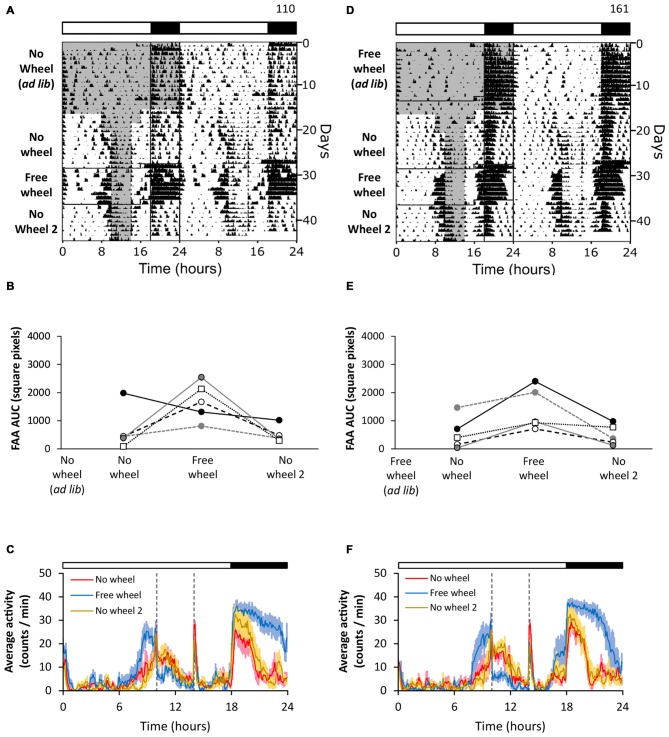Figure 1.
Wheel-running enhances food anticipatory activity (FAA) irrespective of prior wheel running experience. FAA from wheel-naïve (A–C; n = 5) and wheel-exposed (D–F; n = 5) mice was measured in 18L:6D (white LEDs). During restricted feeding, chow was manually placed and removed from the food hopper. The times when food was available are shown as gray shading on the left half of each representative double-plotted actogram (A,D; white and black bars show light and dark, respectively). FAA was quantified (AUC of the last 5 days of data) for each mouse (B,E; unique symbols connected by lines) in successive no-wheel, free-wheel, and then no-wheel conditions. Twenty-four hour group average activity profiles (C,F; dotted vertical lines indicate the time of food availability) show the mean (solid line) and standard deviation (light colored area). Time 0 is lights on. Cage dimensions: no-wheel: 29.5 × 11.5 × 12.0 cm; free-wheel: 29.5 × 11.5 × 12.0 cm with an 11.0 cm diameter running wheel. All individual actograms and activity profiles are shown in the Supplementary Figures 2–4.

